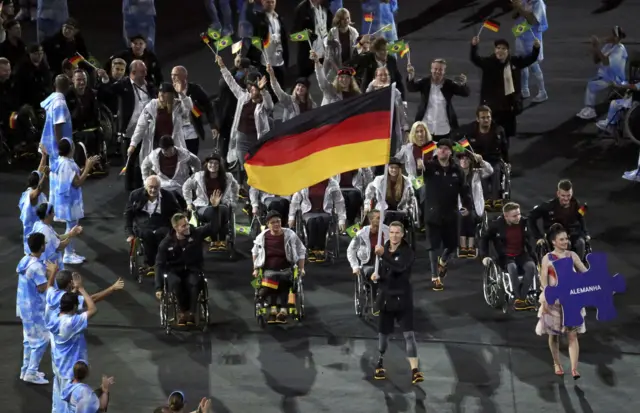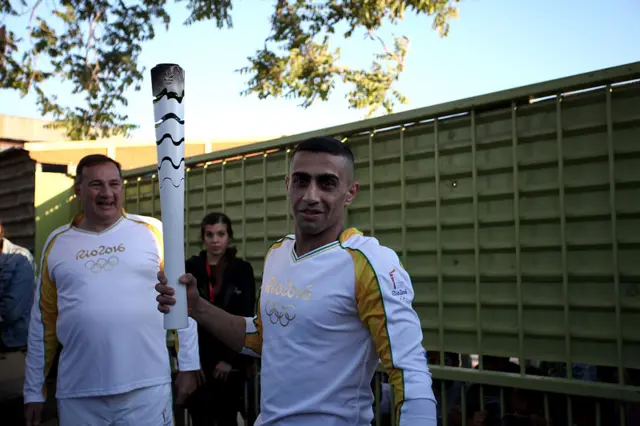Postpublished at 22:47 BST 7 September 2016
 Image source, Reuters
Image source, ReutersWe've had Afghanistan and South Africa and here come Germany, each athlete waving a Brazilian flag and their own nation's flag. Up next is Angola, led by visually impaired sprinter Esperanca Gicasso.
